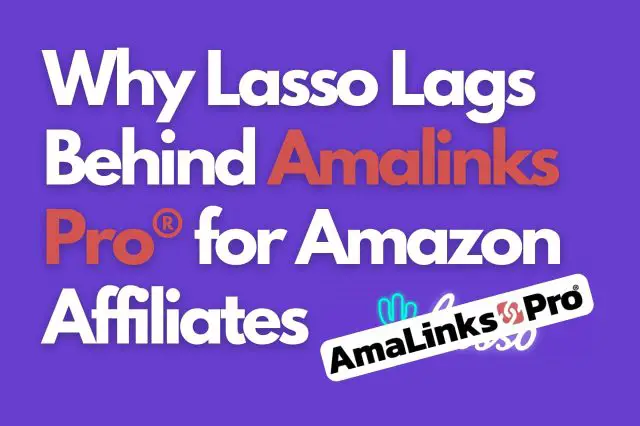Is your affiliate site not generating the amount of traffic you need to make a profit?
Implementing search engine optimization (SEO) will help you acquire tons of organic visitors (and customers) if you do it right.
The best part?
If you adopt a winning SEO strategy on your own, generating organic traffic won’t cost you a dime…at least over time.
But it will take an investment of time and money upfront, but the long-term payoff is worth it!
So before you blow a huge portion of your budget on PPC campaigns, you need to familiarize yourself with the basics of SEO. Doing so can save you a lot of money, especially down the road.
That’s because once your SEO starts working for you, it will continue to work for you well into the future (with proper tweaking and maintenance).
If you’re an affiliate marketer that needs to boost your search engine optimization, you’ve come to the right place. We’ve put together 13 of the most crucial SEO tips for affiliate marketers. Read on to learn how to generate more traffic, leads, and sales by leveraging SEO for affiliate marketing.
1. Uncover Top-Selling Products Within Your Niche

First things first, since you’re running an affiliate website (or are converting an existing website or blog into one), you’ll need to find the right products to sell.
How do you do that?
There are a few ways, but to start, you should always consider which products your target audience is the most likely to buy.
If you don’t know your target audience or niche, you should identify them first. A niche is a specialized corner of the market that caters to specific types of people.
If you already have a blog or website, what is it about?
Do you write about exercising and eating right? Then you’d be in the health and wellness niche. As such, your audience is most likely to buy health and wellness products.
If you haven’t created an affiliate marketing site yet, you’ll need to select a niche. Try to pick a niche that’s popular and pertains to your interests. Some of the most profitable niche markets are:
- Relationships
- Lifestyle
- Real estate
- Health and Wellness
- Technology
- Pets
- Gaming
That doesn’t mean you have to limit yourself to those niches, but it’s helpful to know where the money is at.
Websites like Amazon make uncovering top-selling products in your niche a total breeze. Simply go to the ‘Best Sellers’ tab, and you’ll see a list of best-selling products broken down by niche.
2. Select a Memorable Domain Name Containing SEO Keywords
Once you have a niche in mind, you’ll need to set up the domain name for your website. If you already have a website, you can change your domain name once the registration period is up.
Ideally, your domain name should be catchy, consistent with your branding, and contain a relevant keyword.
What’s a keyword?
A keyword (also called a search query) refers to what someone types into a search engine to find what they need. For example, if someone needs a new guitar pedal, they may type in ‘guitar gear’ into Google. That entire phrase, ‘guitar gear,’ is an example of a keyword.
Once the user enters the keyword, Google will scour its index to find the most relevant content containing that keyword or related phrases. It then ‘ranks’ the results in order of relevancy, quality, and accuracy.
That’s how Google works in a nutshell.
Search engine optimization refers to ‘optimizing’ your website, so it contains short & long tail keywords that your audience regularly uses (among other things). That will help you ‘rank’ for keywords within your niche, ideally on the first page and in the top 5.
As the old adage says, the best place to hide a dead body is on page two of Google search. That’s because almost everybody clicks on the top few results when conducting a search, ignoring all the rest.
As a result, everyone playing the SEO game is competing for one of the top spots on the search engine results pages (SERPs).
Anyway, back to selecting a domain name. You can use the Ahrefs keyword generator tool to uncover popular keywords in your niche to use in your domain name.
NOTE: While this is a crucial step, it’s important not to get too hung up on it, as it’s only one of the over 200 ranking factors Google looks at for SEO. So if you can’t fit a keyword in the name without making it too long, don’t sweat it.
3. Build a Site with an Excellent UX (Or Edit Your Existing UX)
Acquiring millions of organic visitors won’t amount to anything if your website has a poor UI (user interface) and UX (user experience).
What are those?
UI stands for user interface, and it refers to the navigational layout and functionality of your website. In other words, how easy is it to get around your website, make transactions, read blogs, etc.?
If you have a clunky UI, any users that visit your website will quickly leave. A well-designed UI often goes hand in hand with strong visual elements, including logo design that might not be directly a part of UI, but it plays a big role in making your website visually appealing.
The same is true for your UX or user experience – which refers to how users feel when interacting with your website. A positive user experience is one that’s:
- Useful. The content on your website should fulfill a need, such as solving a common user problem.
- Usable. Your website should be easy to use (UI).
- Desirable. Your site should make the most of images, videos, and other design elements to make it as attractive and desirable as possible. Eliciting positive emotions is also a great way to provide a stellar UX.
Our recommendation?
Keep it super simple at first. Focus on creating a handful of pages that you really knock out of the park. After all, you can always add more to the website later.
4. Establish a Budget & Develop SEO Goals

Next, it’s time to map out your long-term SEO strategy. This is also the time to establish a budget for things like content creation and hiring consultants, contractors, or an in-house team.
If you plan on creating all the content yourself, you won’t need to worry so much about coming up with a budget. Just be careful to not try to take on too much yourself; it’s best if you stay in the director chair mostly so you can keep the overall strategy and project management moving ahead.
What is imperative, though, is that you devise an SEO pyramid containing your ultimate goal on top with smaller goals supporting that.
To start, hold a brainstorming session with your team, and decide what the #1 thing is that you want to get out of your SEO campaign. From there, you can develop secondary goals that will help you achieve your goal.
Here’s an example of an SEO pyramid:
- Ultimate goal: To rank in Google’s top 5 for a trending keyword and increase sales from that page.
- Secondary goal: Uncover a keyword that has high search volume but low competition.
- Secondary goal: Create top-tier content optimized for the keyword that outdoes competitors.
- Secondary goal: Acquire quality backlinks.
As you can see, the secondary goals are stepping stones toward your ultimate goal.
5. Conduct a Content Audit to Identify ‘Quick Win’ Opportunities
This step is only if you have an existing website or blog. If you’re creating one from scratch or it’s relatively new and doesn’t have much SEO traffic yet, skip to step #7.
The chances are high that your existing content is not as optimized for SEO as it could be. The good news is you can audit your existing content and then spruce it up to improve your visibility in search results.
During a content audit, ask yourself these questions:
- Does your content contain popular keywords and relevant content?
- Does each page have a meta description containing SEO keywords?
- Are your images missing alt text? (A line of text describing what the image shows)
- Do you have title tags for every piece of content? Are they optimized for SEO?
These questions will uncover your areas for improvement.
At the same time, you should keep an eye out for ‘quick win’ opportunities.
What are those?
An SEO quick win refers to tactics that will provide results within a few weeks instead of months. If you weren’t aware, SEO takes a while to kick in. On average, it will take around 12 months to reach the ‘break-even’ point. After that, you’ll start to see a return (if you do it right).
The most popular example of a quick win is to identify a piece of content that’s on the verge of ranking on page 1. For instance, if you have a blog that’s ranking high on page 2, you should identify the 1 specific keyword it’s close to ranking for higher (which is it’s most popular keyword). Then you optimize that page for that 1 keyword phrase in 5 key fields to give it a quick boost:
- H1
- Body copy below H1
- Meta title
- Meta description
- Url slug
- NOTE: Don’t forget to 301 redirect the old url to the new one or this whole strategy will hurt your SEO.
Do it right, and your blog will penetrate the first page, giving you a nice boost in targeted traffic that you don’t have to wait long to see.
Check Out the AmaLinks Pro® Demo

If you plan on signing up for Amazon Associates (which you should if you’re a beginner affiliate), you definitely want to use AmaLinks Pro®.
With it, you can quickly create visually appealing Amazon affiliate links that are designed to convert. There are product showcase links, image links, text links, and CTA buttons that you can use.
AmaLinks Pro® is also the only app with a No-API mode, a lifesaver for beginners and experts alike. You can use ALP to land your first three sales to gain access to the Amazon Product Advertising API – so don’t wait to check out the demo now.
6. Optimize Existing Content for SEO
This is another tip that only applies to existing websites, so skip to step #7 if you don’t have one.
Now that the audit is complete, it’s time to go back through and optimize your content for SEO. That means adding meta descriptions, title tags, alt text, and using target keywords in your content.
You’ll need to do some research to find target keywords to add to your content. You can use the Ahrefs tool we mentioned before. Make sure the keywords are related to the affiliate products you want to sell.
What’s a meta description and title tag?
Whenever you search for something on Google, the results will display like this:
- A large blue hyperlink that contains the name of the page (“meta” title tag).
- A brief rundown of what the page covers and why you should click on it (meta description).
That’s why it’s imperative that every web page has a meta description and title tag. Besides enticing users to click on your page, title tags and meta descriptions are also vital to convince searchers to click on your result over a competitor.
Plus the title tag and meta description are among the first things Google bots check when crawling a website.
So if your meta descriptions and title tags contain target keywords, you stand a greater chance of ranking for them.
Each image also needs an alt tag or alt text, which serves two purposes. First, it lets users with impaired vision know what an image is showing. Secondly, Google’s crawlers can’t see images, so the alt text helps them infer what the image is about and how it pertains to your article. As such, you want to use keywords within your alt tags.
Once all your existing content is optimized for SEO, you can move on to the next step.
7. Conducting Keyword Research & Examining Search Trends

Now is the time to focus your efforts on discovering new keywords to target for the niche products you identified in step #1.
Ahrefs keyword generator tool is a big help here, so don’t hesitate to use it. Remember to look up keywords related to the affiliate products you want to promote.
For example, if you’re selling dog chew toys, you would type ‘chew toy’ into the keyword tool – and you’ll get to see 100 keyword suggestions for free.
In this case, the keyword ‘chew toy’ has a keyword difficulty score (how hard it is to rank for the keyword due to competition) of 23, which is realtively low (KD is measured on a scale of 1 – 100, with 100 being the hardest).
It also has a search volume of 2.3k, which is popular, especially for a keyword with low difficulty.
Ideally, you want to target keywords with a high search volume but low keyword difficulty. These are the keywords that you stand the greatest chance of ranking for and generating traffic from, as there’s interest in the keyword and not many competitors to outrank.
Pro tip: To get ideas to plug into your Ahrefs keyword research, you should use Google Trends.
It’s a free tool from Google that lets you view a keyword’s popularity over time, also called its trend.
Why is this useful?
It’s because keywords rise and fall in popularity. By being able to see a keyword’s popularity as a graph, you can quickly tell if it’s about to gain or lose traction. But don’t get too focused on trending keywords since the best SEO value comes from targeting evergreen topics (think ones with a consistent history).
8. Develop a Content Editorial Calendar & Release Schedule
Now it’s time to put the keywords you discovered in step #7 to good use. You’ll want to use 1 primary keyword for each of your new blogs, videos, whitepapers, podcasts, and any other form of content you want to release.
This step is all about staying consistent. Don’t worry about how many times a week or month someone else is doing it. Pick the pace you can do, and stick to it. Don’t churn out random topics, either.
Sift through the keywords you identified in the previous step and get commitment on which ones you will write and publish and in what months. Then assign someone (maybe yourself) to hold people accountable.
To stay organized, you’ll need a content calendar and a release schedule that you stick to like glue. All you need is a calendar app or a spreadsheet to keep you and your team of writers on track.
9. Create New Content That’s Optimized for Keywords

Now it’s time to start writing, shooting, or recording – depending on the type of content you’re going to create.
Besides making sure the topic is consistently relevant, the content should also provide significant value to your audience. There’s a ton of competition out there so bring your “A” game! Otherwise, you’re simply creating content to try to rank higher in Google search, which is not only transparent, but it won’t get you very far.
So instead of just writing for search engines, write for humans & Google both. Write as if you’re speaking to a friend or colleague.
Beyond that, create content that your audience will actually want to consume. Common options include solving their problems, entertaining them, or educating them about something new that’s related to their interests.
Visual content is powerful, so aim to include high-resolution images, infographics, and videos wherever possible.
As far as keywords go, make sure each piece of content has:
- The target keyword in the H1
- The keyword in the meta description and title tag
- Related keywords in the body copy and other headers (H2, H3, etc.)
- The target keyword in the body of the article a number of times (and various permutations)
- The keyword in the closing H2 section
10. Insert Affiliate Links in Your Top-Performing Pages
After your content has been out for a while, keep an eye on Google Analytics and Google Search Console to see how things are going.
In particular, pay attention to the pages that are getting the most organic traffic. Not only will you want to copy what those pages do well, but you’ll also want to place affiliate links on them.
That way, your affiliate links will have the most visibility, increasing your chances of landing a sale.
To make inserting affiliate links into your copy a breeze, try out AmaLinks Pro®.
AmaLinks Pro® Pricing Plans

There’s no easier way to add affiliate links to blog posts than with AmaLinks Pro®. It’s a WordPress plugin that allows you to create product comparison tables, stunning product showcases, and clear calls to action.
These tools will make your life as an Amazon affiliate far easier. You’ll be able to add links to your content in seconds instead of spending too much time cleaning up your links manually.
Not only that, but your links will be far more convincing, leading to more commissions and sales. There are pricing plans for every budget level and business size, so don’t wait to sign up for a plan today.
11. Build Quality Backlinks
Link-building is another core aspect of SEO. That’s largely due to how powerful backlinks are for achieving higher rankings.
If you have trouble ranking in the top 10, dofollow external links often make the difference.
What is a backlink?
It’s an external link on another website that points back to your website, hence the name. Backlinks are still one of the most important ranking factors that Google looks at.
Why is that?
It’s because backlinks are one of the primary ways Google determines if a website is trustworthy or not. If it discovers that you have a lot of trustworthy backlinks (from .org, .gov, and .edu pages), it will also consider you trustworthy.
Here are a few quick tips on how you can acquire backlinks:
- Email outreach. Reaching out to a targeted group of sites that have linked to other top 10 competitor articles for your 1 specific keyword (topic) and asking them to add a link to your article because its unique, better, or different in some way.
- Guest posts. If there’s a reputable blog in your niche that ranks high on Google, you can reach out to do a guest post on their site in exchange for a backlink.
- Scholarship sponsorship. University backlinks are among the most powerful. To pick some up for free, you can sponsor a scholarship that’s related to your niche in exchange for a backlink.
- Broken links. There are broken links all over the web, and they’re bad for SEO. You can use Ahrefs backlink checker to find broken links related to your niche. To get a backlink, reach out to the webmaster and offer one of your blogs as a replacement for the broken link.
Those are just a few of about a dozen ways you can acquire backlinks for free, so put them to good use.
12. Monitor Your Progress
By now, your SEO affiliate marketing ship is sailing (hopefully smoothly), and all you need to do is ensure you stay on course. Google Analytics and Google Search Console will help you measure your success in terms of organic traffic, bounce rate, click-through rate, your current Google rank, and most importantly how many affiliate conversions/sales you’re getting from your SEO efforts.
Remember, you won’t start to see results right away. If you just released a blog yesterday, don’t expect it to rank #1 right away.
But if you consistently create SEO focused content + build quality backlinks & don’t give up, you will see positive movement.
13. Tweak Your Strategy if Necessary
Last but not least, you may need to make minor tweaks and adjustments to your strategy as time goes on. As stated before, keywords fall in and out of popularity, but since we’re focusing on evergreen ones this shouldn’t be too much of an issue.
If you notice your rankings are falling, it’s time to examine what you need to tweak or possibly create new pages.
Do more keyword research, discover more relevant topics, and post new content. You can also update old content to save it from being outdated.
Closing Thoughts: SEO Affiliate Marketing

Those are the 13 critical steps you’ll need to take to implement a winning SEO strategy for your affiliate marketing website.
SEO is a competitive space, but nothing beats being able to generate thousands of organic visitors for little to no ongoing cost.
Using affiliate marketing SEO can skyrocket your career as an affiliate by helping you build a following and increasing your sales consistently.
If you plan on joining Amazon Associates, AmaLinks Pro® is an absolute must. It allows you to create highly converting affiliate links in little to no time, and it’s the only app with a No-API mode – so don’t wait to try it out today.




